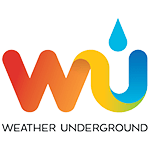Ambient Weather WS-1002-WIFI-CONSOLE Console for WS-1000, WS-1001, WS-1002 Series Weather Station
This item has been replaced by the WS-2002-CONSOLE, you can find it linked below in the "You May Also Like" section.
Add as many consoles as you like to your existing WS-1000, WS-1001, WS-1002, WS-1400, WS-1401, WS-1200, WS-1201 Series Weather Stations from Ambient Weather.
The Ambient Weather OBSERVER weather station, combines reliability, easy installation and dual wireless technology.
The OBSERVER is accurate, precise, and affordably priced. It transmits 915MHz from the outdoor sensor array and indoor temperature sensor to the display console.
Although Internet connectivity is not required, the display console sends and receives internet data using WiFi connectivity.
The OBSERVER transmits outdoor temperature, humidity, wind speed, wind direction, rainfall, and solar radiation from the all-in-one sensor array. The OBSERVER also transmits indoor temperature, humidity and barometric pressure from the indoor temperature array.
You also get dew point and rainfall rate, and a graph provides detailed trends for barometer, temperature and humidity.
The menu based multi-screen display includes NIST internet time server synchronization, imperial and metric units of measure, high and low alarm conditions with audible alert, calibration of all major parameters, real-time internet weather publishing by Wunderground.com, and encrypted WiFi transmission.
The OBSERVER also displays minimum and maximum conditions with time and date stamp, historical archived data, which can be exported to SD Card (optional, see the You May Also Like section below) for advanced data analysis in Excel, and detailed time graphs for spotting weather trends.
The SD Card is also used for firmware updates.
The full color TFT LCD full color display is easy to read, day or night. The attractively thin desktop display is also wall mountable and features automatically controlled brightness settings based on time of day.
Weather Features

Moonrise & Moonset
Sunrise & Sunset
Weather Services

Ambient Weather Network
Weather Underground
PWS Weather
Amazon Alexa
IFTTT
API
PC/Mac







